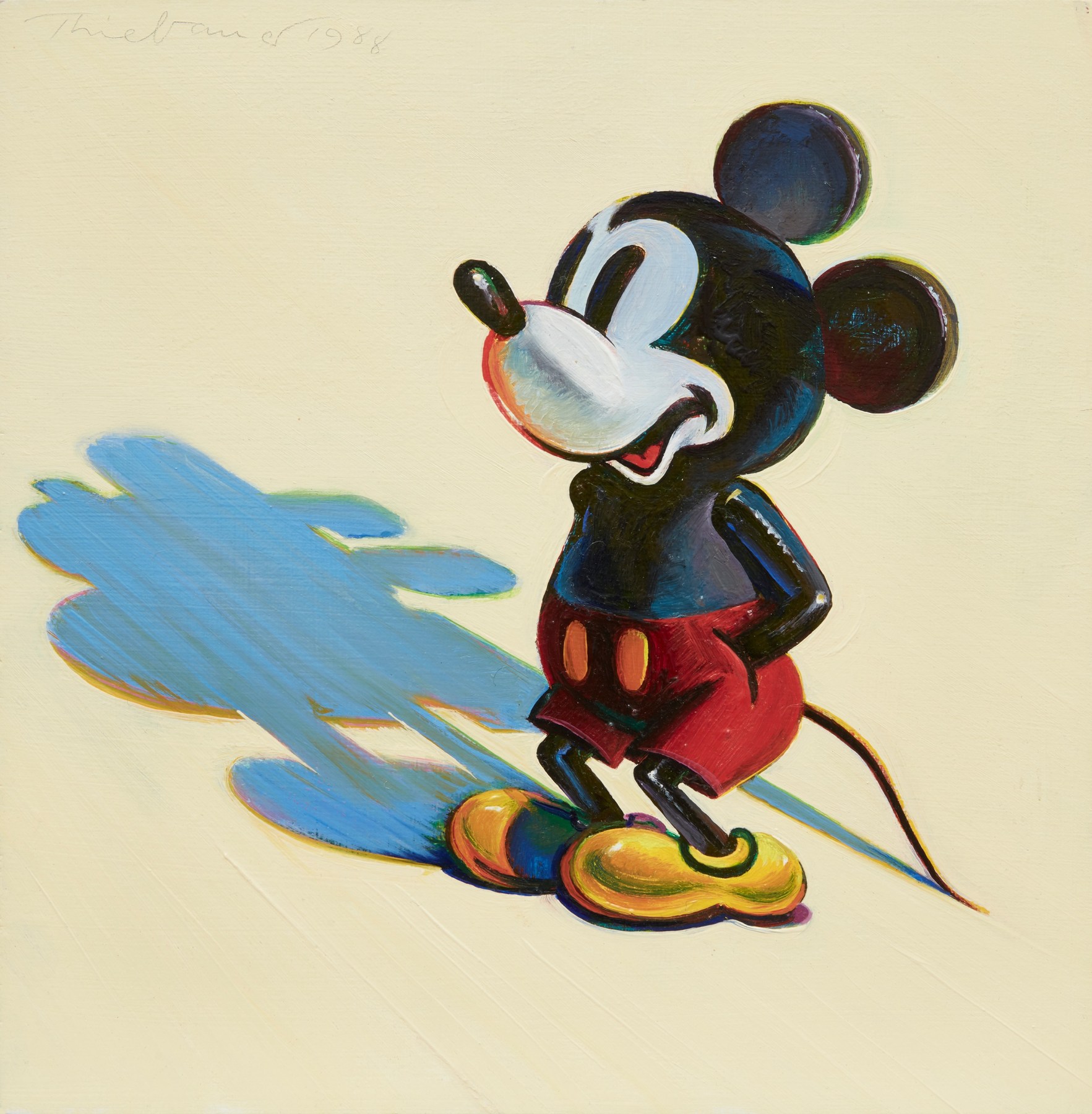Acquavella Galleries
Defined by its infusion of imagery from mass media and the American zeitgeist, Pop Art rose to prominence in America in the late 1950s and early 1960s. The period is documented for its innovative techniques and sensibilities that appealed to heightened interests of mechanical reproduction. However, despite the adoption of the visual language of mass culture and consumerism, from newspaper articles to magazine and billboard advertisements, Pop artists continued to foreground the medium of painting in their practices.
Gallery Director Michael Findlay states, “While shattering the norms of what was considered acceptable subject matter, these artists were skilled, academically trained painters with strong visual vocabularies that they extended by experimenting not only with novel techniques but also with newly marketed paint products such as Magna, Liquitex, and acrylic.”
In Painted Pop, the exhibited works often co-opt the plasticity of mass-produced imagery, yet their process alludes to the artist’s physical intervention.

ANDY WARHOL
Jackie, 1964; Jackie, 1964; Jackie, 1964; and Jackie, 1964
Acrylic and silkscreen on linen
Each: 20 x 16 in. Overall: 40 x 32 in.
(Each 50.8 x 40.6 cm, Overall 101.6 x 81.3 cm)
© 2024 The Andy Warhol Foundation for the Visual Arts, Inc. / Artists Rights Society (ARS), New York
In Warhol’s Four Jackies (1964), four separate canvases come together to form one precarious composition of First Lady Jackie Kennedy. Pulling from found photographs of the cultural icon—either prior to or post assassination of her husband, President John F. Kennedy—Warhol painted a work that not only incorporates the sensationalism of the moment but the artist also manifests a historical record of intense emotionality. Shifting from objects of commodification to celebrity figures, Warhol ascribes similar critical modalities when appropriating imagery of persons into his works, treating the repeated image of Jackie Kennedy an embodiment of American pop culture rather than a product of it. In this regard, Warhol expunges a painted surface that reflects his painterly hand and his personal interest while also reading into the communal consumption of celebrity. This contrast between individual versus collective and repetition versus singularity continued to interest artists well after Pop Art’s initial popularity.
Pop Art aesthetics were intertwined with commercial advertising, as were many of the associated artist’s early careers: Ed Ruscha (b. 1937) took a job as a layout artist for the Carson-Roberts Advertising Agency; Andy Warhol (1928–1987) was a commercial illustrator; and Wayne Thiebaud (1920–2021) created movie posters, advertisements, and cartoons. Drawing from these experiences, artists appropriated their subjects from product packaging, Hollywood movies, comic books—anything that was universally distributed. Both critiquing consumerism and working within it, Pop Art transformed mundane, everyday imagery into fine art.
WAYNE THIEBAUD
Mickey Mouse, 1988
Oil on board
10 1/4 x 10 1/4 in. (26.0 x 26.0 cm)
© Wayne Thiebaud Foundation / Licensed by VAGA at ARS, New York
Wayne Thiebaud’s Mickey Mouse (1988) encapsulates this dichotomy between commercial and art, critique and praise. The iconic cartoon character is depicted in Thiebaud’s unique color-forward approach, transforming the figure into a subject of dramatic simplicity.
Perhaps most characteristic of the style that arose to become “Pop Art” was the blurring of the lines between “high” and “low” art. Pop artists established a relatively groundbreaking concept that art could borrow from any source, whether that was Campbell’s soup cans, cartoons, or even Matisse’s romanticized nudes.

TOM WESSELMANN
Great American Nude #21, 1961
Casein, enamel, graphite, printed paper, fabric, linoleum, and embroidery on board
60 × 48 inches (152.4 × 121.9 cm)
© 2023 Estate of Tom Wesselmann / Artists Rights Society (ARS), NY
The meta-appropriation of art history’s own imagery was of particular interest to Tom Wesselmann (1931-2004). Working within painting’s historically entrenched, the artist approached Pop Art’s consumptive role in a contrary way compared to his contemporaries, incorporating commercial images as collage to accentuate the realism of mid-century America. Imbuing his works with art historical references, Wesselmann’s Great American Nude series marches alongside the history of the reclining nude, satirizing the coquettish nature of the odalisque trope with the overt eroticism found in his inclusion of a collaged smile sourced from advertising. The duality of Pop Art is represented here in an amalgamation of high and low, deconstructing previous hierarchies of culture.
